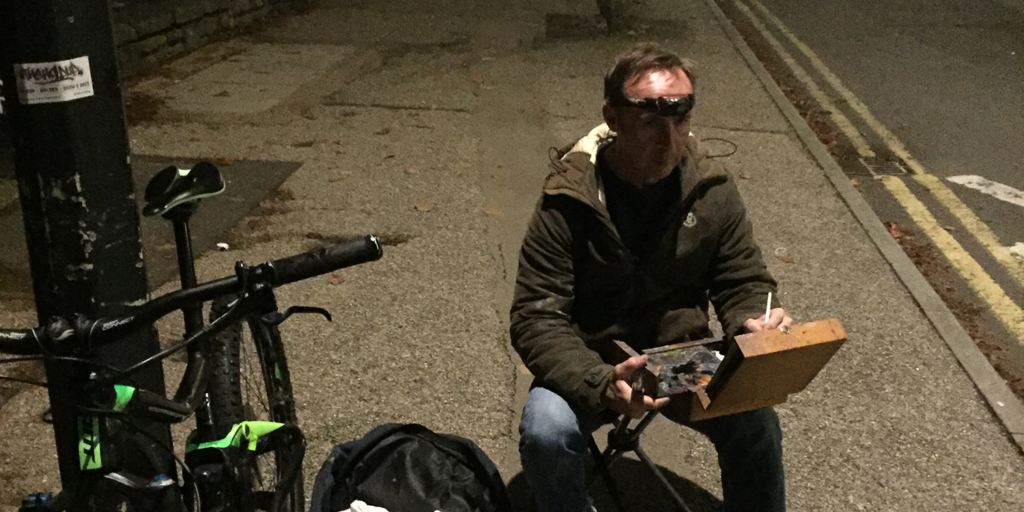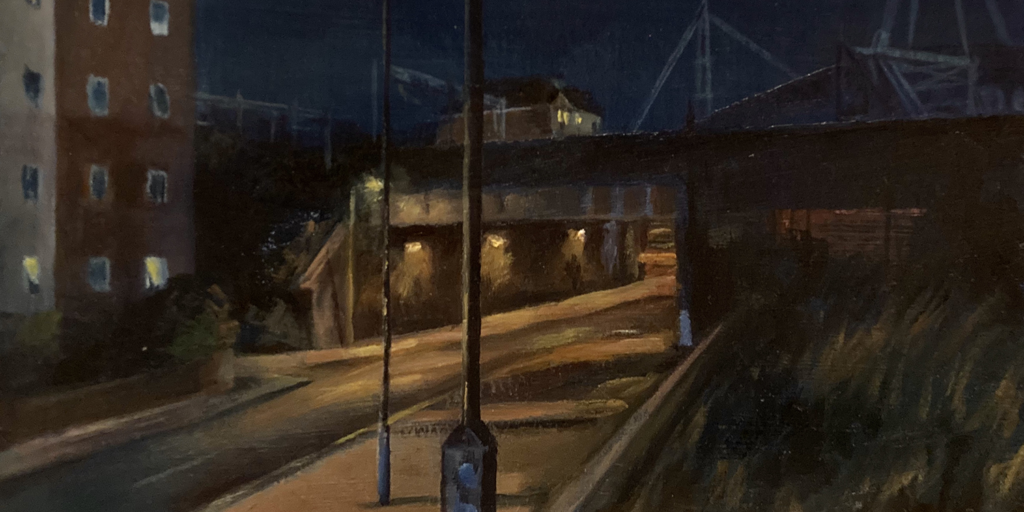After leaving his academic job last year, lockdown gave local painter and illustrator Derek Bainton the chance to work on passion projects

Derek Bainton, 49, has been painting Cardiff street scenes for the past 15 years, using small wooden paintboxes handmade by his father. But he has only been pushing his work commercially since April of this year, starting an Instagram account, @thecityartpeddler, to promote his paintings.
Derek resigned from his senior position at Swansea College of Art in July 2019, intending to pursue creative projects. When the March lockdown hit, he suddenly had the thinking space necessary to get set up on social media and build a professional website. In fact, his experience of lockdown was overwhelmingly positive.
“I loved it,” he said. Although he was initially uneasy about going out to paint on location, often finding once-welcoming park benches taped up, that soon changed.
Listen to this story
“I think what lockdown did was dissolve this notion of anonymity in the city,” he said. “People had a sense of connection, regardless of how passing it might be, whether it was a smile or light conversation. When it came to painting, it brought people closer to my work.”
The general comment people made was ‘Ha, you wouldn’t be able to do that in normal times!’
When he went out to paint a usually busy road in the centre of Cardiff, he found passersby were largely friendlier.
“The general comment people made was ‘Ha, you wouldn’t be able to do that in normal times!’”
A Valleys boy
Derek was born and brought up in Risca, a small mining town west of Newport. Growing up there he was in awe of Cardiff because it was so different to the Valleys, he said. His Irish mother, from Connemara, insisted on Catholic school, meaning Derek would travel into Newport on the bus from age four. From there he would make visits to Cardiff, particularly to the Wales Empire Pool.
He completed a HND course in Natural History Illustration in Bournemouth, before travelling to Australia. There, he found work with the National Trust of Western Australia and travelled the country illustrating their settlements and estates.
Painting these isolated, bleak buildings, out in the middle of nowhere, was the seed of his love of drawing a lonely old building, he said. Edward Hopper, known for painting lonesome urban spaces, was a particular influence.
“I’ve always loved the notion of stillness and melancholy in art,” he said.

Itchy feet
Later he returned to the UK to look after the family sheepdog while his parents went away, and began teaching at Swansea Institute of Higher Education, now Swansea College of Art. He stayed in one form or another for 20 years, before leaving last year, citing “itchy feet.”
Derek moved to Cardiff in 2000 and lived close to the docks, as the Bay was known then. He said he appreciated Cardiff’s “real Welshness” and working class heritage, as well as the city’s rich mix of cultures.
“It used to be very rough and ready, although it’s become quite cultural now and quite an exciting place to live in,” he said.
More recently, green spaces like Bute Park provided welcome comfort during lockdown.
“It’s therapy. Having that in the heart of the city is one of the greatest pleasures.”
